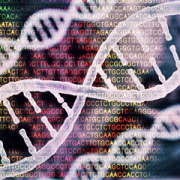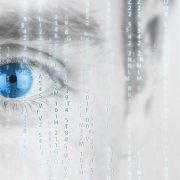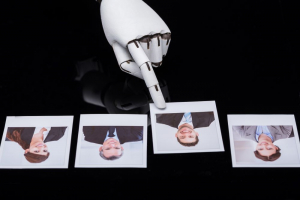In the second instalment of our Emerging Tech series, we look at the development of commercial genetic testing, and the data protection implications of widespread genetic screening.
“Customers who are genetically similar to you consume 60mg more caffeine a day than average.”
“You are not likely to be a sprinter/power athlete”
“Customers like you are more likely to be lactose intolerant”
“You are less likely to be a deep sleeper”
These are all reports you can get from commercial genetic testing. Companies such as 23 and me, Ancestry.com, MyHeritage, DNAfit. We’ve talked about the rise of genetic testing before, but recent announcements from Richard Branson have brought the topic back into discussion.
Earlier this month Richard Branson announced he was investing in 23 and Me, and the company would be going public (meaning shares will be traded on the New York Stock Exchange). This push for growth and investment has reopened the proverbial can of worms, and people are once again considering the privacy implications of genetic testing.
What is genetic testing?
Genetic testing takes a DNA sample, such as hair or saliva, and identifies variations in your genetic code. These variants can increase or decrease your risk of developing certain conditions. These tests can also identify variations in ‘junk DNA’ that have no impact on your life, but can be used to identify relatives and ancestors.
Genetic screening first appeared in the 1950s. Researchers later developed more detailed DNA profiling in the 1980s, used for crime scene investigation. Technology has come forward in leaps and bounds since then. Once an expensive and costly feat, you can buy a reasonably affordable testing kit in many pharmacies or online. In Estonia, the government are offering genetic testing to citizens; to screen for predisposal to certain conditions and help individuals act early with personalised lifestyle plans or preventative medication.
There have been suggestions to utilise genetic screening in the Education sector as well. In 2006, two years before 23 and Me began offering their first testing kits, geneticists suggested schools as the perfect place to carry out widespread screening. Researchers have also investigated the possibility of genetically informed teaching, with teaching style tailored to an individual’s predisposition to certain learning styles.
For those outside education, the biggest development has been Direct to Consumer (DTC) genetic testing. DTC testing began mostly as a tool for ancestry identification, now there are millions of consumers, and even companies offering tailor made nutrition plans designed around your genetics.
I find myself writing this a lot, but it sounds like science fiction. Yet again, the science of today has caught up with the fiction of yesterday. However, if growing up surrounded by shelves of Sci-Fi has taught me anything, a cautious approach is often best. This is definitely true of Genetic testing. There are many possible advantages, but there are also risks.
A Breach with Big Implications:
Data breaches are always a possibility when you entrust your information to someone else. However, genetic data is clearly a sensitive type of personal data, particularly if a customer has opted for genetic health screening.
Companies will put swathes of protective measures in place, but in a world where a cyber-attack occurs approximately once every 39 seconds, there will be breaches. In fact, there already have been breaches. In July last year, hackers targeted the genetic database GED match, and then later used the information to target users of MyHeritage. Even without cyberattacks, breaches occur. When recovering from the recent hack, GEDmatch reset all user permissions. This opened up over a million genetic profiles to police forces, despite users opting out of visibility to law enforcement.
If genetic testing is ever to be used in schools or offered nationwide, one key issue will be ensuring they hold that data securely. If schools and colleges offered genetically informed teaching, they would have to hold that data too. Adequate security measures for such information can be difficult to manage, particularly if education budgets stayed the same. Infrastructure would require radical change before genetic testing could ever be implemented safely.
Breaches are nothing new, but with such precious data, they can be worrying.
Secondary Functions and Sources of Discrimination:
Under the data protection act, data controllers must set out what they will use your personal data for. They cannot use that data for unrelated purposes without informing you. However, over recent years, there have been several cases where ambiguity over accessibility has made it to the news.
Individuals can opt-in to share their data with 23 and Me research teams. Many customers were comfortable with researchers using their data for medical advances. It was not until their public deal with GlaxoSmithKline, that it was clear genetic data was being passed to pharmaceutical companies for profit.
This data was anonymised, so the outcry following the announcement was more about ethics than data protection. However, there have been multiple cases where companies have allowed law enforcement to access their databases, despite stating otherwise in their privacy policy.
Your genetic data reveals a huge amount about you and your characteristics, so it’s important to know exactly who can see it. For example, variations of the MAOA gene have been linked to levels of aggression, as well as conditions such as ADHD. Identification of these types of variants could help employers find individuals more likely to succeed in their field. However, it could just as easily lead to discrimination in hiring. Researchers have also linked other conditions such as bipolar disorder to certain genetic variants. Should that information be available to employers, it might lead to workplace discrimination. For example, bosses not promoting individuals they think might later become “unstable.”
There has been speculation that biological data could be used for identifying terrorist subjects, tracking military personnel, or even rationing out treatment in overstretched health systems. This is all speculation. Even so, there are fears of discrimination based on the possibility of you developing a certain condition or trait.
The Risk of Re-identification:
The speculation above works on the basis of genetic data being individually identifiable. Companies use anonymisation to reduce risks of such discrimination. Genetic companies go to great lengths to separate genetic data from identifiers. For instance, anonymising data for research purposes, or storing personal and contact details on a separate server to genetic data. The view has always been that if you separate personal identifiers from the raw genetic data, the individuals remain anonymous.
Unfortunately, research has already shown that it is possible, in principle, to identify an individual’s genomic profile from large dataset of pooled data. It’s an interesting thought. Companies are often quite willing to share anonymised data for additional purposes. It is no longer personal data and isn’t protected with the same legal safeguards. If we can re-identify a data subject, it requires the same levels of security and legal protection as personal data. Dawn Barry, cofounder of genetic research company LunaDNA, said “we need to prepare for a future in which re-identification is possible”.
If this data could be re-identified, it raises questions over the definition of anonymity. It also reignites the discussion over who Genetic Testing companies should be sharing data with.
Understandable Worries? Or Needless Fear?
Schools and colleges have always been a proving ground for new technologies. It’s worth remembering that fingerprint scanning was being used in UK schools for over ten years before the Protection of Freedoms Act caught up in enforcing parental consent.
It would be easy see than a “scientifically based, individualised learning experience” could be presented as an ideal way of helping all students achieve the best outcomes.
Interestingly, Direct to Consumer genetic testing has now been available for just over a decade, so there is still plenty of room for development. However, we’re still some way from determining the day–to-day life of students in education.
Here’s a sobering thought though. Should the worst happen, and something compromises your data, you can change your passwords, you can change your bank details. You can even change your appearance and your name. You can’t change your DNA. We’ve got to keep that in mind as the world of biometrics continues to grow.
Next time, we’ll look at remote learning and the technologies that are being developed for the virtual classroom. Find previous posts from this series here.




